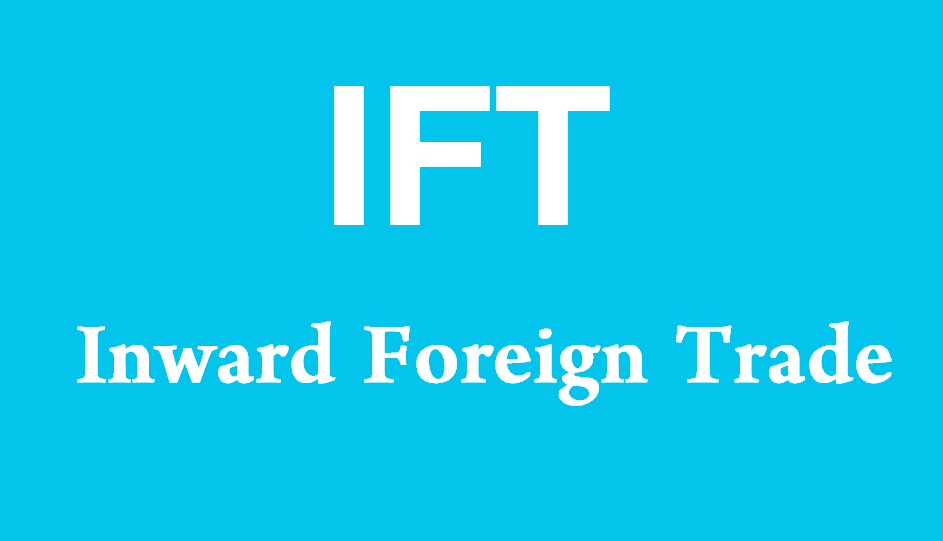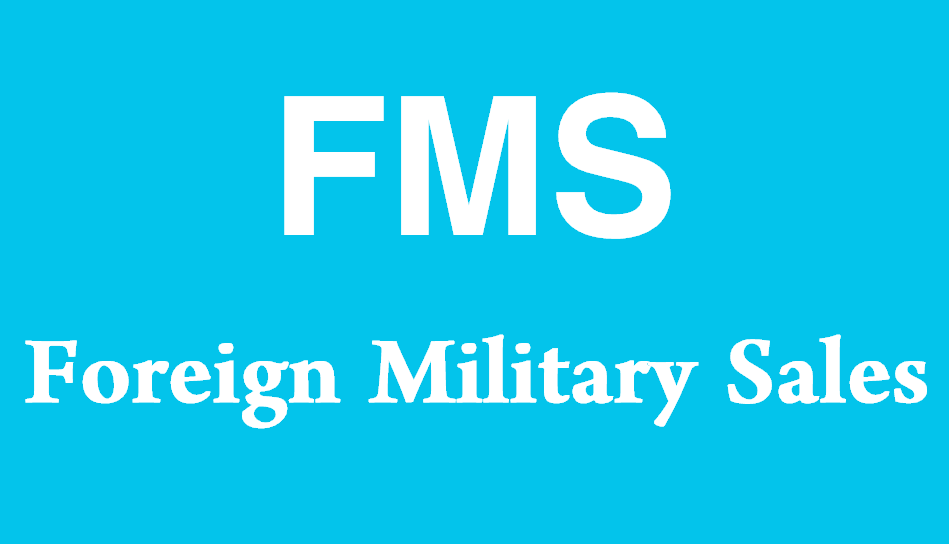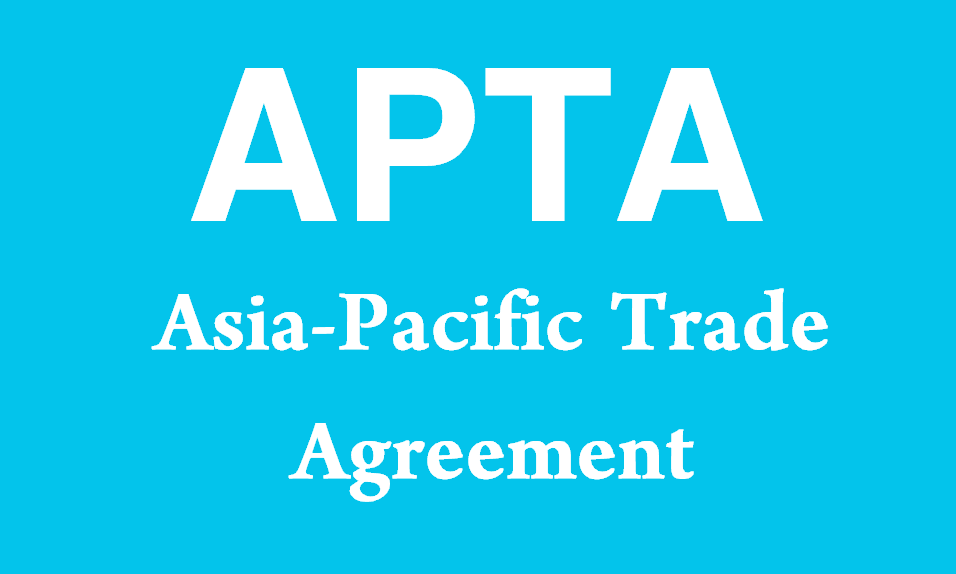What does IFT stand for?
IFT stands for “Inward Foreign Trade.” Inward Foreign Trade refers to the movement of goods and services into a country from foreign sources. It encompasses imports of goods and services that are purchased by residents of the country from suppliers located outside its borders. Inward foreign trade plays a crucial role in a country’s economy, influencing factors such as economic growth, international competitiveness, consumer choice, and industrial development. Understanding the dynamics of inward foreign trade involves analyzing trade policies, import regulations, tariffs, customs procedures, and trade agreements that govern the flow of goods and services across national borders.

Comprehensive Explanation of Inward Foreign Trade
Inward foreign trade, commonly referred to as imports, constitutes a significant component of a country’s economic activity and plays a crucial role in shaping its economic landscape, industrial structure, and international relations. This comprehensive explanation delves into the various aspects, dynamics, and implications of inward foreign trade, covering its definition, determinants, processes, challenges, and opportunities.
Definition and Scope
Inward foreign trade refers to the commercial transactions involving the purchase of goods and services by residents of a country from foreign suppliers or producers located outside its territorial boundaries. It encompasses a wide range of products, including raw materials, intermediate goods, capital equipment, consumer goods, and services, that are imported into the country for domestic consumption, production, or investment purposes. Inward foreign trade is governed by trade policies, regulations, customs procedures, and international agreements that regulate the movement of goods and services across national borders.
Determinants of Inward Foreign Trade
Several factors influence the patterns, volumes, and composition of inward foreign trade:
- Economic Factors: Economic variables such as income levels, consumer preferences, exchange rates, inflation rates, interest rates, and economic growth rates impact the demand for imported goods and services. Higher income levels and favorable economic conditions often lead to increased demand for imports, while currency depreciation can make imports relatively cheaper and more attractive.
- Trade Policies: Trade policies, including tariffs, quotas, trade agreements, and customs regulations, directly affect the cost, availability, and competitiveness of imported goods. Tariffs and trade barriers imposed on imports can restrict foreign trade and protect domestic industries, while trade liberalization measures can enhance market access and stimulate import competition.
- Supply Chain Dynamics: Global supply chains and production networks influence the sourcing and distribution of goods in international trade. Factors such as production costs, transportation costs, lead times, supply chain resilience, and supplier relationships play a crucial role in determining the origin and destination of imports.
- Technological Advances: Technological innovations, advancements in logistics, and improvements in communication networks have facilitated the globalization of trade and enabled more efficient and cost-effective sourcing of goods from foreign markets. E-commerce platforms and digital trade channels have expanded opportunities for cross-border commerce and import transactions.
- Government Policies: Government interventions, industrial policies, investment incentives, and regulatory frameworks can affect import demand and supply dynamics. Import restrictions, licensing requirements, quality standards, and sanitary regulations imposed by governments influence the entry of foreign goods into domestic markets.
Processes Involved in Inward Foreign Trade
Inward foreign trade involves several key processes and stages:
- Market Research and Sourcing: Importers conduct market research, supplier identification, and product sourcing activities to identify potential suppliers, evaluate product offerings, negotiate terms, and select suitable sources for importing goods and services.
- Order Placement and Contracting: Importers initiate purchase orders, negotiate contracts, and enter into agreements with foreign suppliers regarding product specifications, pricing, payment terms, delivery schedules, and quality standards to formalize the import transaction.
- Customs Clearance and Documentation: Importers complete customs clearance procedures, prepare import documentation, and comply with regulatory requirements, including customs declarations, import licenses, certificates of origin, and inspection certificates, to facilitate the entry of imported goods into the country.
- Transportation and Logistics: Importers arrange transportation, shipping, and logistics services to transport imported goods from foreign origins to domestic destinations. Logistics activities include freight forwarding, cargo handling, warehousing, inventory management, and distribution logistics to ensure timely delivery of imported goods.
- Payment and Financing: Importers arrange payment methods, such as letters of credit, bank transfers, documentary collections, or open account terms, to settle import transactions with foreign suppliers. Financing options, including trade credit, export financing, and trade finance instruments, may be utilized to finance import purchases and manage cash flow.
Challenges and Risks in Inward Foreign Trade
Inward foreign trade presents various challenges and risks for importers:
- Trade Barriers: Import restrictions, tariffs, quotas, and non-tariff barriers imposed by governments can hinder import activities, increase costs, and limit market access for foreign goods.
- Currency Fluctuations: Exchange rate volatility and currency fluctuations pose risks to importers, affecting the cost of imported goods, pricing competitiveness, and profit margins.
- Supply Chain Disruptions: Disruptions in global supply chains, transportation disruptions, logistical challenges, and trade disruptions, such as natural disasters, geopolitical tensions, or pandemics, can disrupt import operations and affect the availability of imported goods.
- Regulatory Compliance: Compliance with import regulations, customs procedures, quality standards, and trade documentation requirements can be complex and time-consuming, requiring importers to navigate regulatory frameworks and ensure legal compliance.
- Payment and Financing Risks: Payment delays, currency convertibility issues, credit risks, and financing constraints can impact import transactions, requiring importers to manage payment and financing risks effectively.
Opportunities and Benefits of Inward Foreign Trade
Despite the challenges, inward foreign trade offers numerous opportunities and benefits for importers:
- Market Access: Inward foreign trade provides access to a wide range of goods and services from global markets, allowing importers to source products that may not be available domestically or are more competitively priced abroad.
- Diversification: Importing goods from diverse sources enables importers to diversify their supply chains, reduce dependency on single suppliers or markets, and access a broader range of products, technologies, and inputs.
- Cost Efficiency: Importing goods from low-cost manufacturing countries or regions can result in cost savings, economies of scale, and improved cost competitiveness for importers, enhancing their profitability and operational efficiency.
- Product Innovation: Importing innovative products, technologies, and inputs from foreign markets can stimulate product innovation, technological advancements, and market differentiation for importers, enabling them to meet evolving consumer demands and preferences and gain a competitive edge in the marketplace.
- Access to Specialized Goods and Services: Inward foreign trade allows importers to access specialized goods, components, raw materials, and services that may not be available or produced domestically. This facilitates product differentiation, customization, and value addition in importers’ offerings to meet specific market requirements.
Notes to Importers
Importers should consider the following notes when engaging in inward foreign trade and managing import-related activities:
1. Market Research and Supplier Selection
Conduct thorough market research and due diligence to identify reliable suppliers, assess product quality, pricing competitiveness, and compliance with regulatory standards. Establish robust supplier relationships based on trust, communication, and mutual understanding to ensure smooth import operations and minimize risks.
2. Regulatory Compliance and Documentation
Stay informed about import regulations, customs procedures, and documentation requirements applicable to imported goods. Ensure compliance with import licensing, labeling, certification, and documentation standards to avoid delays, penalties, or regulatory non-compliance issues during customs clearance.
3. Risk Management and Contingency Planning
Identify and assess potential risks associated with inward foreign trade, including currency risks, supply chain disruptions, regulatory changes, and geopolitical uncertainties. Implement risk mitigation strategies, contingency plans, and insurance coverage to safeguard import operations and mitigate adverse impacts on business continuity.
4. Logistics and Transportation
Optimize logistics and transportation arrangements to streamline import processes, reduce lead times, and minimize transportation costs. Partner with reliable freight forwarders, carriers, and logistics providers to ensure timely delivery, efficient cargo handling, and supply chain visibility throughout the import journey.
5. Payment Terms and Financing
Negotiate favorable payment terms, financing arrangements, and trade finance facilities with suppliers to optimize cash flow, manage working capital, and mitigate financial risks associated with import transactions. Explore options such as letters of credit, trade credit insurance, and supplier financing to facilitate import payments and financing needs.
Sample Sentences with the Acronym “IFT” and Their Meanings
- The import manager reviewed the IFT data to analyze trends in inward foreign trade volumes, identify key import categories, and assess the impact of trade policies on import dynamics.
- Meaning: The import manager utilized data from the Inward Foreign Trade database to examine patterns in import volumes, identify significant product categories, and evaluate the influence of trade policies on import trends and dynamics.
- The customs officer conducted routine inspections of inbound shipments to ensure compliance with import regulations, verify customs declarations, and facilitate the clearance of goods through the IFT system.
- Meaning: The customs officer performed regular checks on incoming shipments to verify adherence to import regulations, validate customs documentation, and expedite the processing of goods through the Inward Foreign Trade system.
- The trade analyst presented a report on the impact of exchange rate fluctuations on import prices, import demand elasticity, and import competitiveness using regression analysis of IFT data.
- Meaning: The trade analyst delivered an analysis of how changes in exchange rates affect import prices, the responsiveness of import demand to price changes, and the competitiveness of imports, employing regression analysis of Inward Foreign Trade data.
- The importer negotiated favorable trade terms with overseas suppliers based on insights gleaned from IFT reports, market intelligence, and competitive benchmarking analysis.
- Meaning: The importer engaged in discussions with international suppliers to secure advantageous trade terms, leveraging information from Inward Foreign Trade reports, market research, and comparative analysis to inform negotiation strategies.
- The economic researcher utilized IFT datasets to conduct a comparative analysis of inward foreign trade patterns across regions, industries, and time periods, revealing insights into trade dynamics and structural shifts.
- Meaning: The economic researcher employed datasets from the Inward Foreign Trade database to compare and contrast import patterns among different geographic areas, sectors, and historical periods, uncovering trends and changes in trade dynamics.
Other Meanings of “IFT”
| Acronym | Meaning |
|---|---|
| IFT | Institute of Food Technologists |
| IFT | In-Flight Test |
| IFT | Institute for Transportation |
| IFT | Integrated Fault Tolerance |
| IFT | International Federation of Translators |
| IFT | International Foundation for Telemetering |
| IFT | Intensive Family Therapy |
| IFT | International Fair Trade |
| IFT | Interferometric Synthetic Aperture Radar |
| IFT | Industrial Fast Track |
| IFT | Interface Terminal |
| IFT | Installation Function Test |
| IFT | In-Flight Telephone |
| IFT | Interference Termination |
| IFT | Internet Freedom Taskforce |
| IFT | Information Field Theory |
| IFT | Intestinal Failure Team |
| IFT | Integrated Fire Control |
| IFT | In-Flight Trajectory |
| IFT | Inheritance Factor Test |






